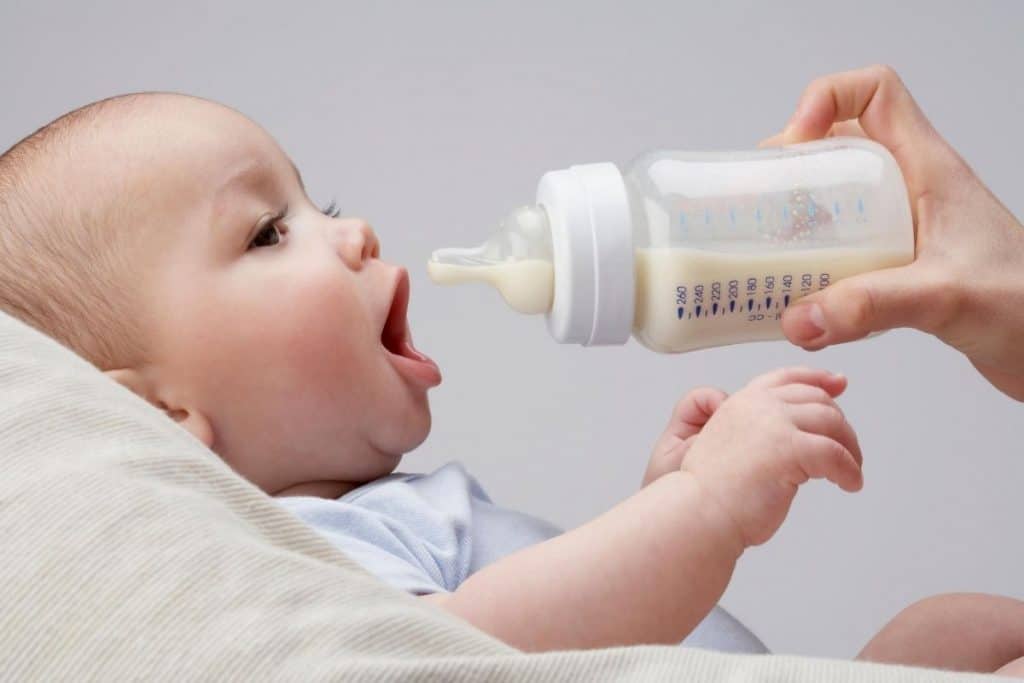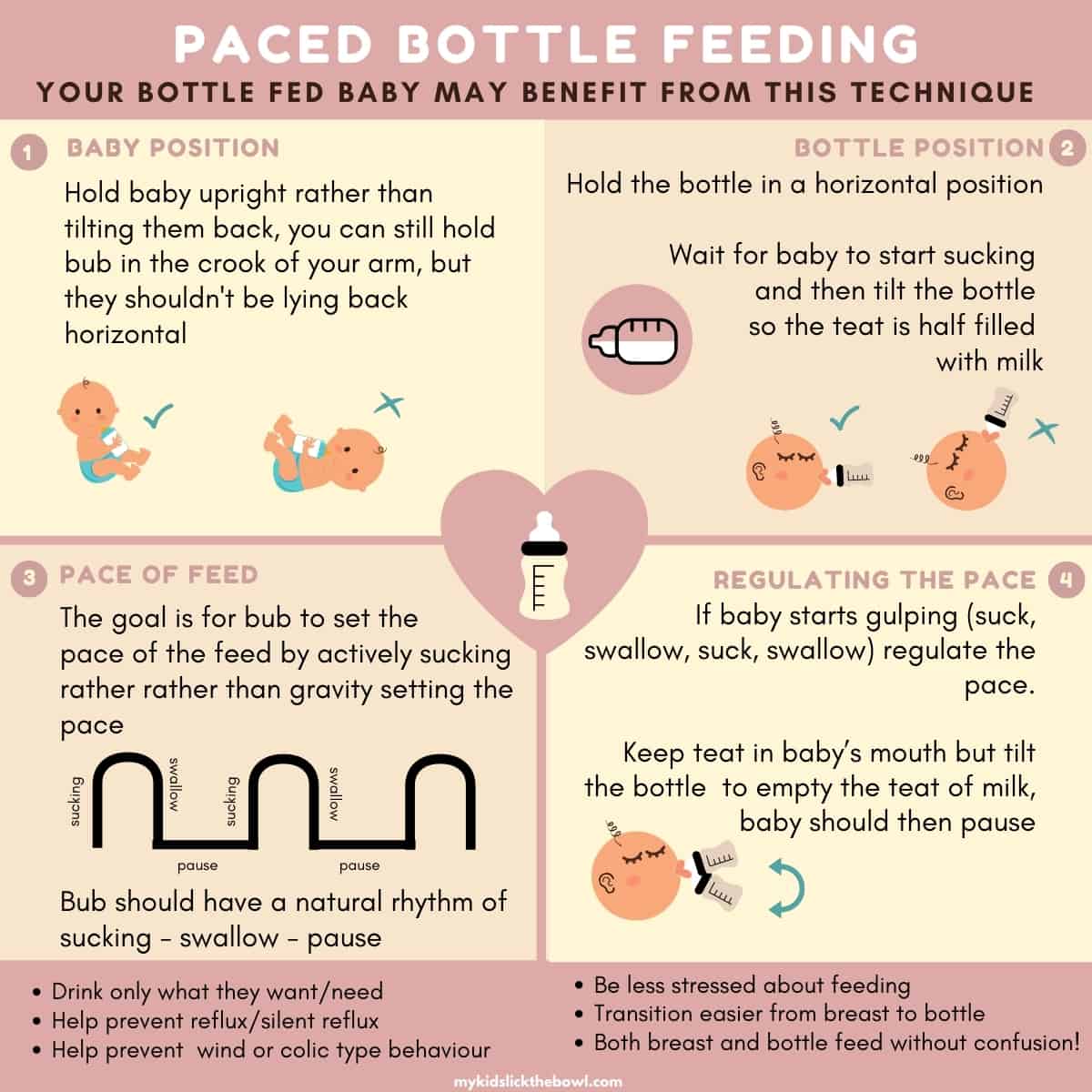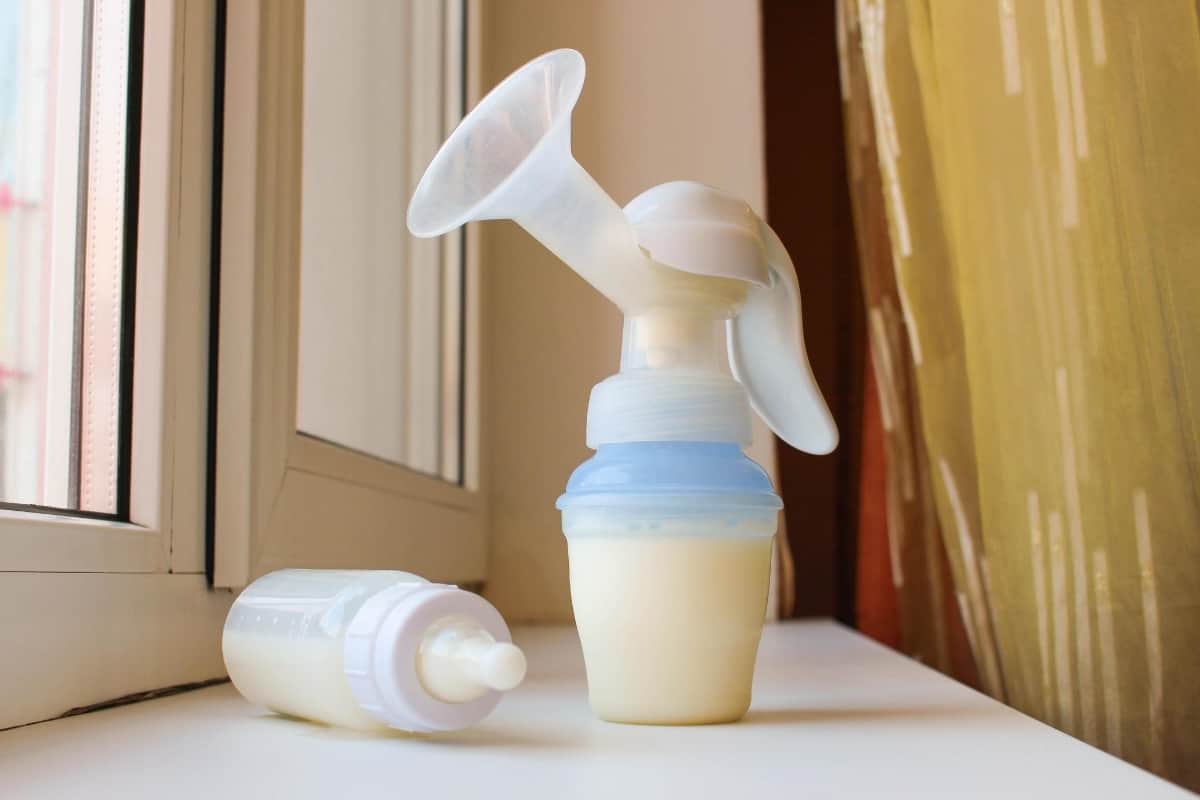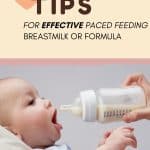Paced Bottle Feeding
Some of you may have heard of paced feeding, some might be questioning whether it has any benefits, and of course, when it is best to do, how do you do it and why…I'll cover it all!
Whilst bottle feeding may seem like a very simple task, a simple change in technique could help with some of the issues we see in little ones.

What is paced bottle feeding or paced feeding?
Pace feeding is where baby is fed slower to allow their brain time to catch up to their stomach – in other words help prevent overfeeding or lots of wind. The goal of paced bottle feeding is for bub to set the pace of the feed rather than the pace being set by gravity.
It mimics breastfeeding where a baby has to work for their milk and will follow a pattern similar to suck, suck suck, swallow, pause.
Benefits of paced feeding?
What many parents misinterpret in those early days is an overfed baby. They often behave like a hungry baby because they are uncomfortable and want to suck for comfort. Parents can fall into the trap of then feeding again, and so the cycle continues.
Paced feeding can help your baby
Drink only what they want/need
Because traditional bottle feeding (baby tiled back, bottle held up high) is easier for babies they can often overfeed. Sucking is calming and for that sucking motion to help them fall asleep it takes time. Feeding more doesn’t usually mean they will sleep longer or better.
Help prevent reflux/silent reflux
Reflux for most babies is due to a combination of too much feed and an immature gut. More specifically the little ring of muscle at the top of their stomach doesn’t get strength until around 6-9months old. We can’t change the immature gut, but we can help with the amount we feed so that baby isn’t trying to spill back up some of their milk to make them comfortable again.
Help prevent excessive gut wind or colic type behaviour
Just like adults, if we have a big meal we feel uncomfortable for some time – colicy, bloated… It is the same for babies. What we interpret as trapped wind doesn’t have a lot to do with air swallowed and more to do with being overfull. It is uncomfortable and babies can only tell us this by pulling their knees up, grunting, groaning and crying.
Be less stressed about feeding
Many babies starting off with bottles can cry and be upset. You may also notice some seem startled when gulp feeding. By allowing baby to pause during feeds, and feed slower it can make the whole experience less stressful for them.
Transition easier from breast to bottle
If milk is pouring into their mouth it can make getting used to a bottle hard for a breastfed baby. Slower feeding, closer to breastfeeding, less likely to reject the bottle.
Both breast and bottle feed without confusion
We used to think babies developed a preference for teats/dummies but what we are finding is they get a preference for the speed of milk. If they do not have to work for the milk and it comes out instantly (no letdown from a bottle) they can start to refuse working at the breast.
Help mum to worry less about pumping
If baby is consuming 150ml with traditional bottle feeding, but only taking say 100-120ml with paced feeding then mum is constantly trying to keep up the impossible task of pumping more per feed. This can lead to her feeling like her supply has dropped/isn’t enough which can start a cascade of worry.
Save This Recipe!
How to pace feed your baby
Whether you are breastfeeding and doing some bottle feeds or completely formula feeding the technique is the same.
- Hold baby upright. This can still be in the crook of your arm but baby should not be lying back horizontal.
- Hold the bottle horizontal or flat
- Tickle baby on the lips with the bottle teat and allow them to open their mouth first
- Insert the teat to get a deep latch and if needed, tilt the bottle down so the teat touches the roof of baby’s mouth – this stimulates them to suck
- Wait for baby to start sucking and then tilt the bottle so the teat is half-filled with milk
- You should notice baby sucking a few times before swallowing and pausing
- If baby starts gulping (suck, swallow, suck, swallow) keep the teat in baby’s mouth but tilt the to empty the teat of milk, baby should then pause
- Once baby begins to suck again, tilt the bottle once again to half fill the teat
Note: It is ok for baby to swallow some air when the suck on an empty teat. Tilting the bottle is less disruptive to baby when feeding than pulling the bottle out every time baby pauses. This air will be brought up when burped/popped over your shoulder at the end of a feed and if needed, pause in the middle, offer a burp and then continue.

Breastfeeding and Bottle Feeding
There are a couple of differences if you are breastfeeding and doing the odd bottle versus exclusively bottle feeding (formula or expressed milk).

For those mums who are breastfeeding it is important to use the slowest flow teat possible and stick with this teat size for as long as you are still breastfeeding. For example, using a preemie teat at 4months old is still ok. You do not need to move up the teat levels as baby grows as this is the most common reason why babies start refusing breastfeeds and only want bottle feeds.
It is also really hard to know how much milk to start with when introducing a bottle to a breastfed baby. There are rough guidelines so speak to your midwife, or lactation consultant for more information based on your baby. And remember it is ok not to finish the bottle, their stomachs are small and designed to feed regularly and feeding more does not usually mean more sleep – if anything it can be the opposite!
I have an article on breastfeeding tips that may be helpful if you are a breastfeeding mama.
Breastmilk supply is often a worry for breastfeeding mamas, I cover off galactagogues/milk boosting things on this website too.
Formula feeding and pace feeding
For formula fed babies, paced feeding is often even more important. Tins of formula give feeding guide recommendations, but parents fall into the trap of thinking baby has to drink exactly what the tin says, or that feeding more will help them sleep longer.
For example, many tins will say 0-2 weeks: 50 to 60ml (depending on the company). A baby on day one is likely to only need 10ml per feed, by week one more like 50ml and by week three to four approaching more like 100ml. Paced feeding lets them decide how much to take and in these early weeks it will likely mean a lot of formula is wasted – and this totally normal.
Whilst paced feeding can seem a little difficult at first the take home message is, baby upright, bottle horizontal and tilt the bottle to slow the flow of milk. This gives baby rests throughout their feed because as the name suggests, feeding is not a race.
If you are making decisions about which type of baby formula will suit your baby, this article takes you through the different types, and what all the lingo means.
FAQs
Pace feeding is where baby is fed slower to allow their brain time to catch up to their stomach – in other words help prevent overfeeding or lots of wind. It mimics breastfeeding where a baby has to work for their milk and will follow a pattern similar to suck, suck suck, swallow, pause.
The short answer, yes! Feeling overwhelmed by milk, having it spilling out of the sides of baby’s mouth is stressful for a new baby. They are trying to balance breathing and feeding at the same time. Slowing a feed down not only helps prevent colic/reflux/overfed symptoms but it also makes the bottle feeding experience more enjoyable.
There isn’t a set time as such. But baby should come off the bottle looking relaxed, settled and not be rooting for more. Usually if a breastfeed would take say 20 minutes total, you are aiming for around that time with a bottle feed as well. For those just bottle feeding, watch your baby. If they finish a bottle in 10minutes but still seem upset, slow the next feed down and see how you go.
Ideally you want to continue for at least 6months, until their gut starts to mature to handle larger volumes. But, there is no harm in continuing to do all bottle feeds this way for as long as you like – follow baby’s cues
Narrow (old school) style bottles are actually considered better than the newer wise shaped teats as babies can get a deeper latch on a narrow teat. Whilst a wide teat looks great from the outside, they often have very short nipples that prevent them reaching far enough back. The way that baby latches is important especially for those breast plus bottle fed babies. Narrow teat brands often make slower teats as well i.e preemie flow, which can be very helpful for newborns.
This article was researched and written by Alexis Fletcher-Reid
About the author
Professionally, I am a midwife (BHSc. Mid) and Nutritionist (BSc. Hum Nut, Sprt Sci) who has been working with families for the past 12 years, mostly in the ‘first 1000 days’ space (preconception through to 2 years old). I focus a lot on breast and bottle feeding, formula, and introducing solids – topics second only to baby sleep! I’m also a mother to a one year old and in my “spare time” owner of both blossom baby and my new cloth nappy venture www.kekoa.co.nz.

Quick Start Guide To BLW
Baby led weaning doesn’t need to be complicated, grab my quick start guide to begin your little ones food journey.